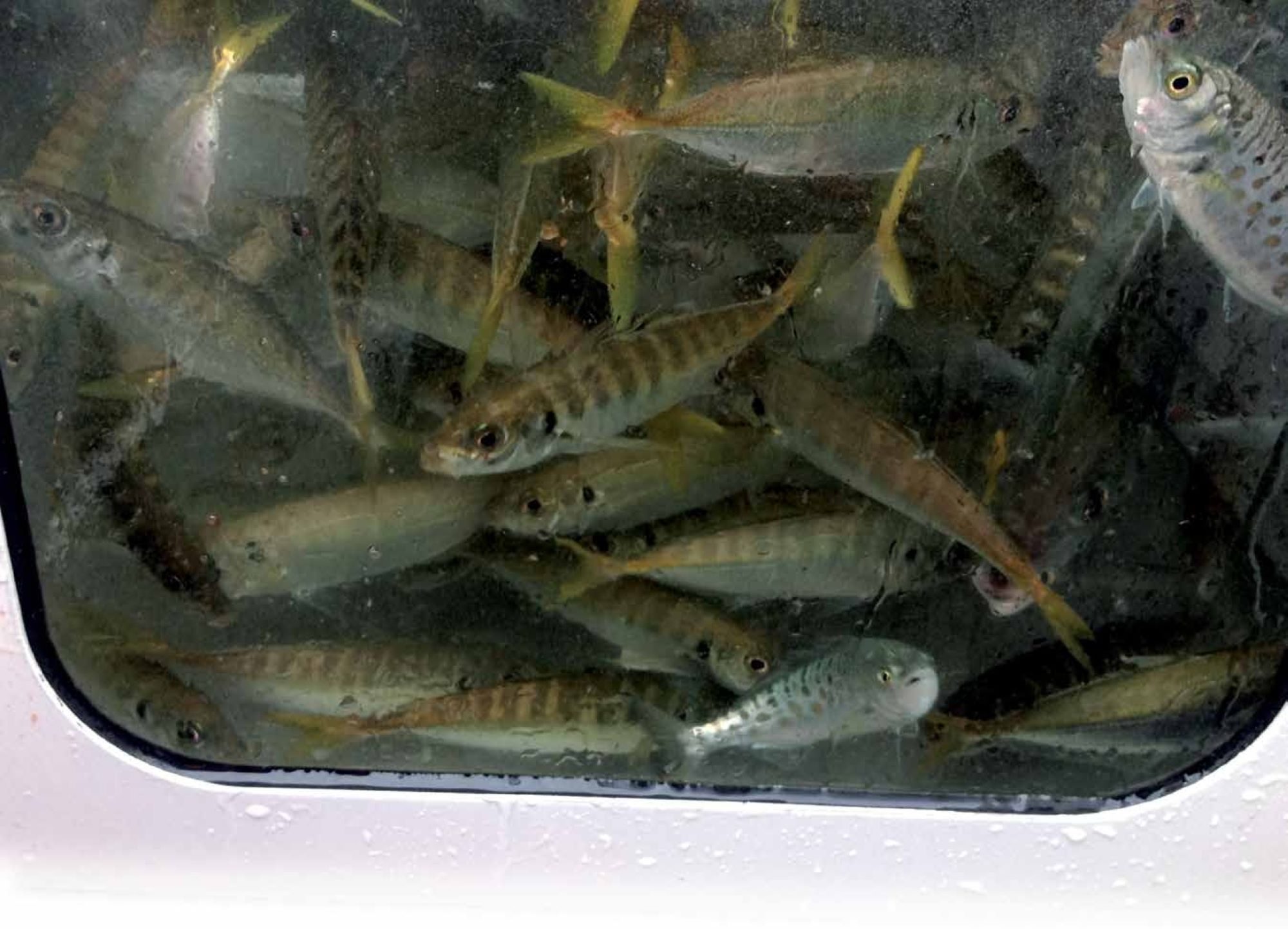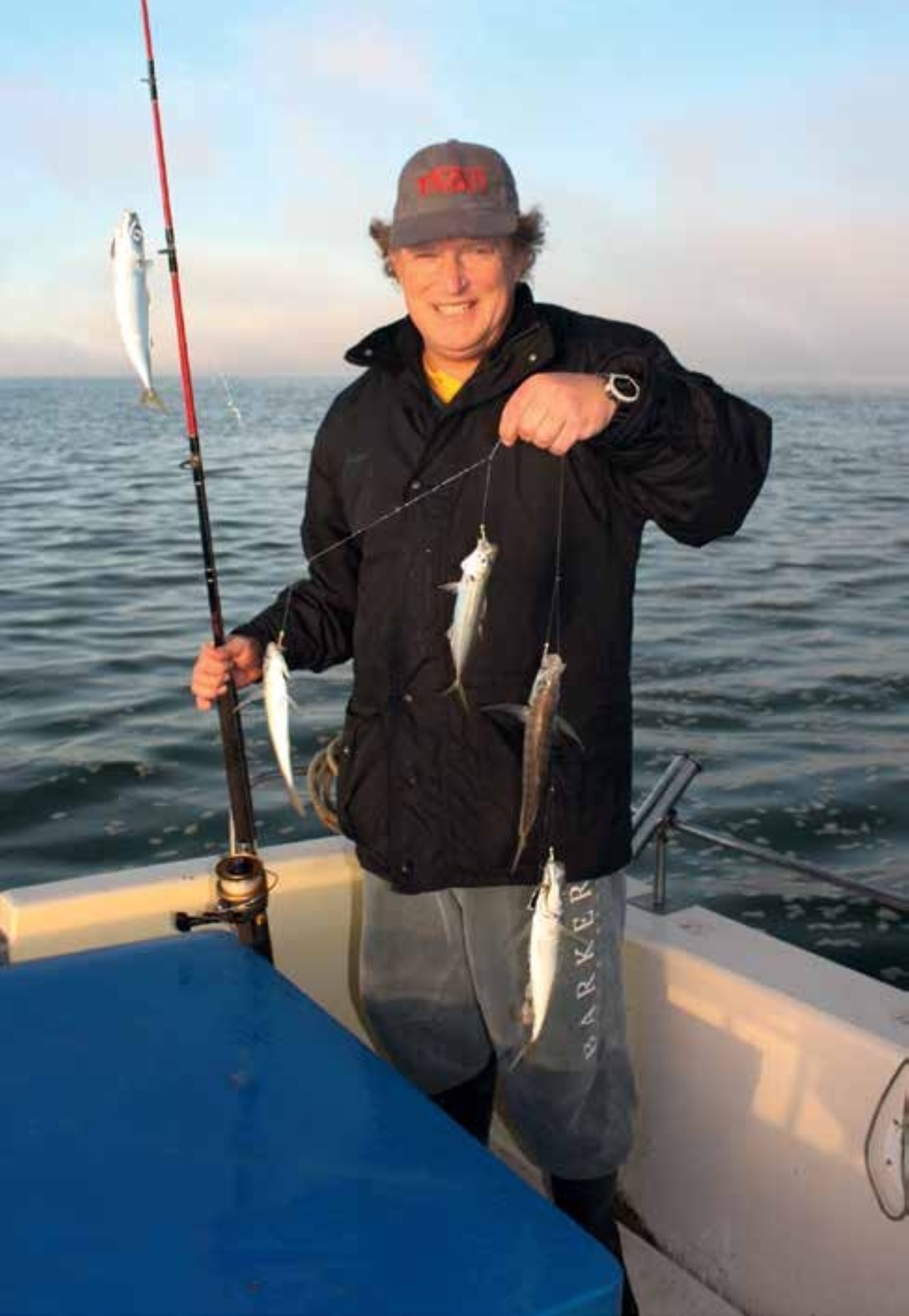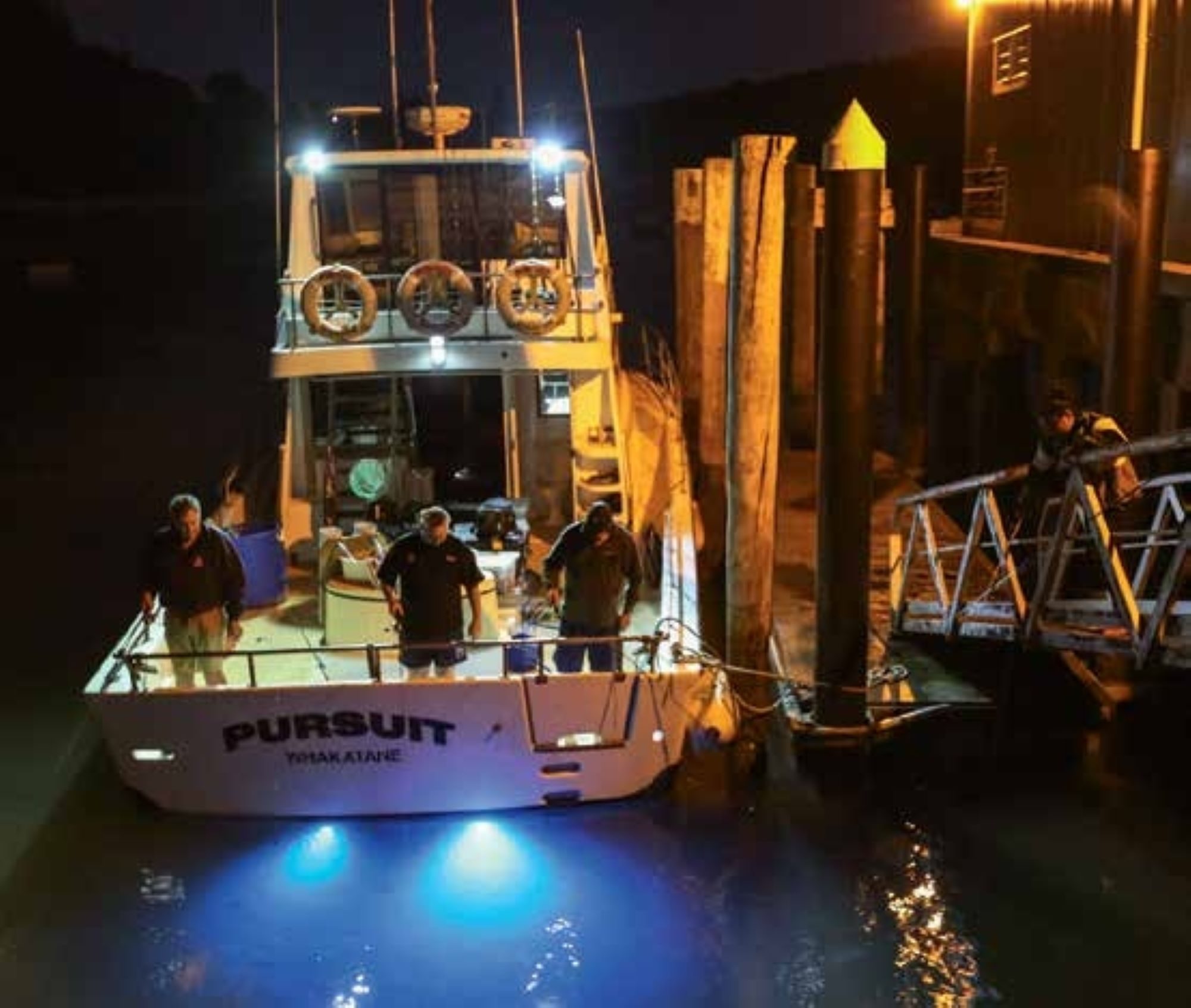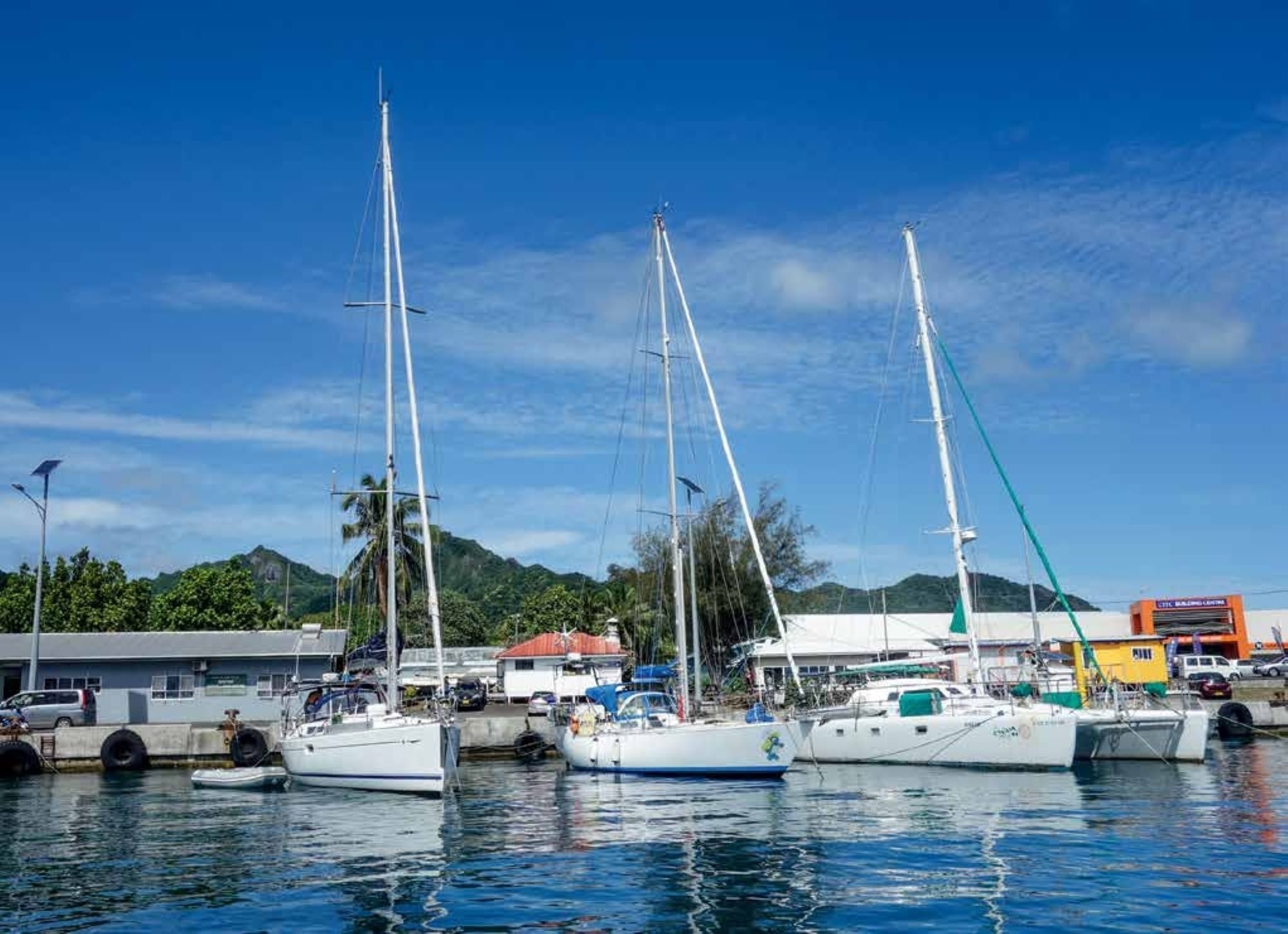

Skyrocketing bait prices could make justifying regular fishing trips more challenging for budget-conscious anglers. Perhaps it’s time to catch your own bait?
Targeting mackerel with sabiki flies is my go-to option. Jack mackerel, whether alive and wriggling, freshly killed and still twitching, or very dead and frozen,thawed and butterflied, or cut into strip baits, often entices bites when nothing else works.
Jack mackerel, also commonly called yellowtail, tend to congregate near inshore structure, often close to where sand meets weedy reef, or in estuary and harbour channels and dropoffs where there’s a bit of depth and current. They also hang around manmade structures such as wharves.
At times they form huge schools that are easy to see on the fish-finder. Anglers can simply stop the boat over a mackerel shoal and drop sets of sabiki flies into it. At other times mackerel are harder to locate in numbers and may need to be enticed to your anchored boat with berley.

TIPS TO GET THE BEST FROM YOUR BAIT FLIES:
• The best mackerel-catching tackle comprises whippy (3-6kg) spinning rods around 7-8 feet long (2.13–2.44m), rigged with 2000-3000 size reels loaded with 4-6kg BS (breaking strain) braid or nylon.
• My favourite sabiki brand is Hayabusa, followed by Owner; in all cases look for sabikis armed with ‘pink shrimps’ (basically a krill imitation) in #10 hook size, although it can pay to have packs of #12 or #8 on hand too, just in case the mackerel are bigger or smaller than expected. Sabiki rigs made with fluorocarbon droppers tend to be the most effective. The best flies feature a sliding luminous bead on each dropper or incorporate flies made from luminous latex (more on this shortly) – ideal for night fishing.
• Rather than shortening them to make them easier to use, it’s better to fish sabikis in their original six- to eight-fly strings.
That way they cover more of the water column, which can make a lot of difference to success. And, of course, more flies on a string make it possible to catch more mackerel at once.
• Make sure the flies are attached at the right end to your mainline – sabiki flies should branch outwards, not hang down along the backbone.
• Attach a 2oz (57g) teardrop sinker to the swivel-clip at the bottom of the string. This might seem excessive, but it helps to keep the sabiki rig taut so tangles are less likely with multiple fish hook-ups.
• If fishing in deep water (i.e. 20 metres or more), check the mackerel school’s depth on the fishfinder before dropping the flies onto them from a drifting boat. You should then have a reasonable idea of when to pause or slow the flies’ descent. If you get it right, the line will often go slack as mackerel bite and hook up. If you get no bites at that depth, jiggle the rod a few times before dropping the flies another metre or two and repeating the rod movements. However, mackerel often hold hard on the bottom, so be prepared to fish your flies there as well – it’s sometimes the best place to start.
• If you are confident your flies are correctly positioned but the fish aren’t biting, use the rod to impart a slow, swooping, jittery motion to the flies; the object is to imitate the movements of tiny organisms, so keep your movements small, subtle and jerky to better imitate injury.
• Upon hooking up, it’s important to immediately wind in slowly but steadily. This often results in other mackerel hooking up during the retrieve. Avoid the temptation to leave the rig where it is to ‘load up’ as this usually ends up in a tangled mess of mackerel and flies. But don’t crank too hard, as mackerel have soft mouths and can easily rip off.


• There will be times when the mackerel play ‘hard to get’. Try baiting each fly with a small thin strip of fish or squid. Squid is nice and tough, but quickly loses its scent – small baits cut from fresh skipjack belly is far better. Nice and oily! Don’t move baited flies around – they tend to spin unattractively – just hold them at the depth the mackerel are showing.
• It is possible to have an ‘automatic’ bait catcher to augment bait supplies when anchored up over suitable ground with a weighted berley pot deployed. Position the Wobble Pot (or similar) so it’s tied amidships a metre or so up off the bottom. If a baitfish ‘cloud’ is spotted on the fish-finder, place the bait rod in an angled rod holder close to the berley.
An angled rod holder allows the rod to take on a deep bend without snapping, but always ease the reel’s drag off a bit anyway as a precaution. The boat’s gentle rocking is often enough to entice mackerel bites. • If fishing at night, it pays to fish in illuminated areas, such as around wharves or from anchored boats with spot/ deck lights. That’s because various small sea creatures that mackerel like to feed on are attracted to the light. Deploying berley also improves success. The darker water adjacent to or just below the most brightly lit zones are often more productive (possibly because predators are present), so be sure to fish your flies all around.
• A small but worthwhile trick on tough nights involves holding the bait-flies under a bright light for 15-20 seconds.
‘Charging’ their luminous beads this way often results in a bent rod soon afterwards!
• If fishing from the wharf, or when tied up beside one, try fishing the shadowy area beneath the structure. Mackerel often seek shelter there, especially behind any pilings that interrupt the flow. Fishing such spots is risky, so check the current direction to avoid your flies being swept onto the structure, although a big mackerel or two, or a trevally hooked might well take your flies around an oyster-encrusted wharf piling anyway!


MACKEREL HANDLING TIPS
If planning to use mackerel as live baits, it pays to handle them as little as possible. This is especially important on long trips where baits may have to live in the live well for hours or even days. Minimal handling means they survive longer and remain livelier.
• Upon swinging them onboard, grab the rig’s sinker with your free hand for better control and easier hook removed.
• Rather than handling mackerel with warm, dry hands when de-hooking them, which removes their protective body slime and burns them, use a ‘shepherds crook’ type wire de-hooker or the back of a butter knife.
• Slide the knife or bent wire upwards along the trace and until it’s lodged at the bend of the hook next to the mackerel’s mouth. At this point the bend of the hook should be pointing upwards with the mackerel hanging down. A couple of gentle shakes should result in the fish falling off the hook into the live-bait tank – untouched by human hands!
• Avoid crowding the bait tank as this can be detrimental to the baits’ health.Also, try not to mix big baits with small ones, unless they are of the same species. (For example, large kahawai can really beat up smaller mackerel.)
• Keep baits in fresh, well-oxygenated water. A strong reliable pump will keep water flowing in a tank, but be careful what it is pumping in — too much freshwater (often present on the surface in estuaries and bays after heavy rain) will kill your mackerel.
Happy bait-fishing everyone! BNZ
NEXT MONTH Autumn tactics.




